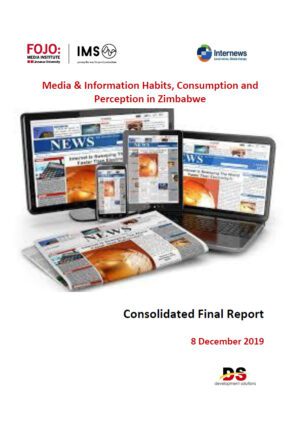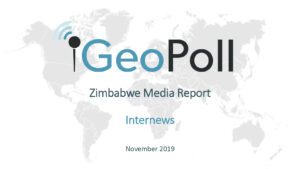In August 2019, Internews partnered with Fojo-IMS to jointly conduct an Audience Survey, intended to serve as a baseline survey for their media development projects. The audience survey was conducted in eight provinces of Zimbabwe (Bulawayo, Matabeleland North and Matabeleland South, Midlands, Masvingo, Manicaland, Mashonaland East and Harare) where the programme is being implemented.
The Media and Information Habits, Consumption and Perceptions survey sought to understand six key issues: 1) News media habits of Zimbabweans; 2) News concept of Zimbabweans (what news is to the individual); 3) Public trust levels in the media; 4) Perception and understanding of key developmental issues; 5) Media and information literacy levels of Zimbabweans; and 6) Participation in relevant key issues through media (by women, men, boys and girls). Mixed methods were used to collect data that provides evidence on trends on these six key issues in all ten provinces of Zimbabwe.
Among other things, the study concluded that the concept of ‘news’ is interpreted differently by people of different gender and age living in different locations in Zimbabwe. The study also concluded that the media sector is insufficiently diverse content-wise to meet the needs of consumers. Resultantly, the effectiveness of the media to respond to the news and information needs of its consumers is inadequate.
In addition, Internews also launched a media audience research report in collaboration with one of its international partners, GeoPoll. These audience data and broadcast ratings provides media managers, advertising agencies, and media development workers with access to systematic data that describes and analyses patterns of media consumption in the country. The research summarizes media consumption across different geographical locations in Zimbabwe disaggregated by age and gender of the audience.
GeoPoll collects this data using mobile telephone technology and in Zimbabwe, GeoPoll uses its existing user database of more than 5 million mobile subscribers (categorized by age, sex, and location) to serve as the sample base for the surveys.


